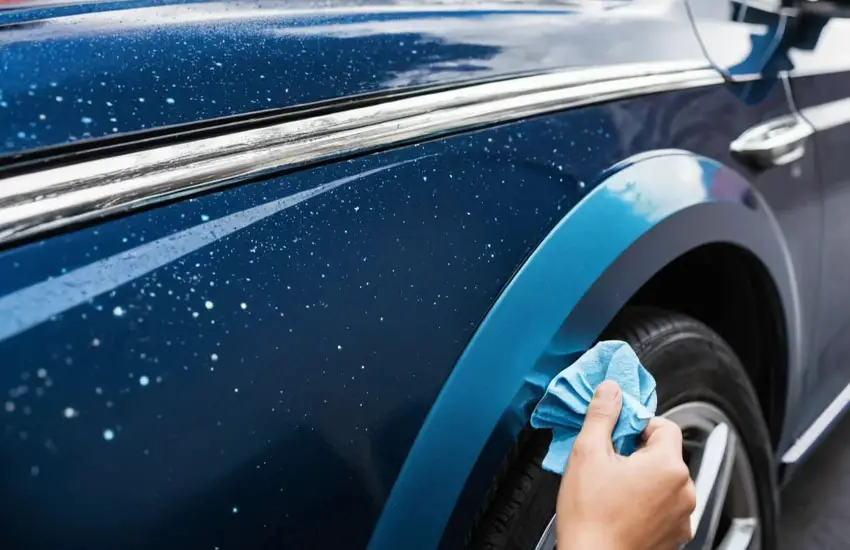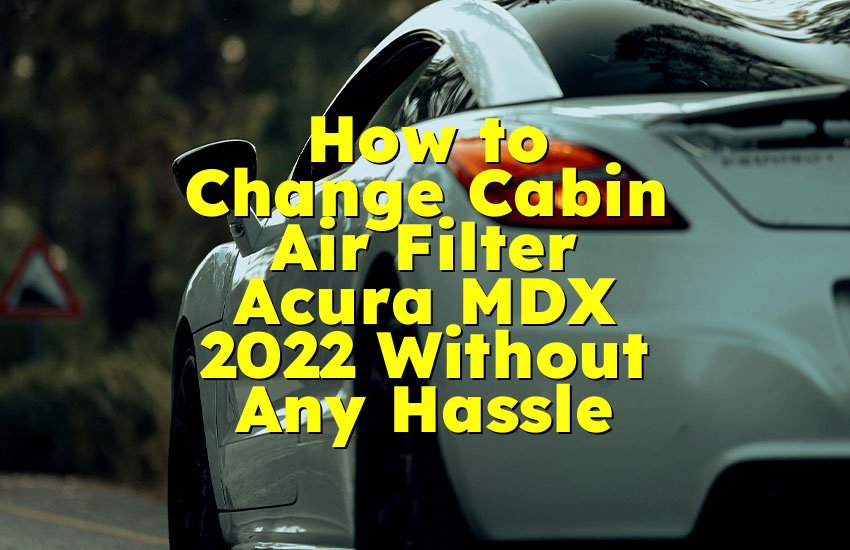As an Amazon Associate, I earn from qualifying purchases at no extra cost to you.
White Spots On Car Paint: Causes and Easy Solutions!
Cars are more than just vehicles; they represent our personal style and pride. When you invest in a car, you want it to look its best at all times. However, one common issue that many car owners face is the appearance of white spots on the paint. These spots can be frustrating, detracting from the beauty of your vehicle. In this blog post, we will delve into the reasons behind these white spots, how to prevent them, and the best methods for removal. Whether you’re a new car owner or someone who has experienced this problem before, this guide is for you.
What Causes White Spots on Car Paint?
Understanding the causes of white spots on car paint is the first step in tackling the problem. These spots can arise from a variety of factors, each with its own characteristics and potential solutions.
1. Hard Water Spots
One of the most common causes of white spots on car paint is hard water. When water containing high levels of minerals, such as calcium and magnesium, evaporates, it leaves behind a residue. This residue can create unsightly spots on your car’s surface, especially if the water has been allowed to dry on the paint.
These spots are often more noticeable after a rainstorm or when washing your car. They can be especially stubborn if they have been allowed to sit for an extended period. The minerals can bond with the paint, making them difficult to remove. If you notice white spots on your car after washing it, it’s likely due to hard water.
To prevent hard water spots, you can use distilled water for washing your car or dry the car immediately after rinsing it. Additionally, applying a wax or sealant can help create a barrier between the paint and any potential water spots.
2. Bird Droppings
Bird droppings are another common culprit behind white spots on car paint. While they may seem harmless, they can be quite acidic and can damage your car’s finish if left untreated. The droppings can etch into the clear coat and paint, leading to permanent stains or discoloration.
Bird droppings can leave white spots that are difficult to remove without proper care. If you notice a bird dropping on your car, it is crucial to clean it off as soon as possible. Using a gentle soap solution and a microfiber cloth can help lift the droppings without scratching the paint.
To prevent bird droppings from damaging your car, consider parking in covered areas or using a car cover when possible. Regularly washing your car can also help keep these harmful substances at bay.
3. Tree Sap
If you park your car under trees, you may encounter another source of white spots: tree sap. Sap can drip from branches and create sticky spots on your car's paint. When the sap dries, it can leave behind a white or cloudy residue that is challenging to remove.
Tree sap not only looks unattractive, but it can also damage the paint if not removed promptly. Like bird droppings, tree sap can etch into the clear coat and leave lasting marks. To remove tree sap, use a specialized sap remover or a gentle rubbing alcohol solution on a microfiber cloth. Be sure to follow up with a car wash to ensure all residues are gone.
To minimize sap buildup, try to avoid parking directly under trees or regularly washing your car to remove any sap before it has a chance to harden.
4. Paint Oxidation
Over time, car paint can oxidize, especially if the vehicle is frequently exposed to harsh elements. Oxidation occurs when the paint reacts with air and moisture, leading to a dull appearance and white spots. This process is often accelerated by factors such as sun exposure, humidity, and the use of abrasive cleaning products.
Oxidized paint may look chalky or faded, and you might notice white spots forming in certain areas. Restoring oxidized paint typically involves polishing the surface to remove the oxidized layer, followed by applying a good wax or sealant to protect the paint.
Regular maintenance can help prevent oxidation. Keeping your car clean and applying protective coatings can extend the life of your paint and keep it looking shiny.
5. Improper Washing Techniques
Using the wrong washing techniques or products can also lead to white spots on your car. If you use abrasive sponges or brushes, you may scratch the paint, leading to a dull finish that attracts dirt and debris. Some cleaning agents can also leave behind residues that appear as white spots.
To avoid this, always use soft microfiber cloths or sponges specifically designed for car cleaning. Avoid household cleaners, as they may contain chemicals that can harm your car's paint. Opt for pH-balanced car wash solutions that are gentle yet effective.
Proper washing techniques include rinsing your car thoroughly before applying soap, washing from top to bottom, and drying the car promptly to prevent water spots.
6. Chemical Exposure
Certain chemicals can react with your car’s paint and cause white spots. Common sources include road salt, bird droppings, tree sap, and harsh cleaning products. Even some car waxes and polishes can leave a white residue if not applied correctly.
If you suspect that chemicals are causing the white spots, it’s important to address the issue quickly. Rinse off any chemical residue as soon as possible and clean the affected area with a suitable car wash solution.
To protect your car’s paint from chemical damage, be mindful of where you park and what products you use for cleaning. Always read labels to ensure that the products you choose are safe for automotive finishes.
How to Remove White Spots from Car Paint
If you find white spots on your car, don't panic. There are several effective methods to remove them, depending on the cause. Let's explore these methods in detail.
1. Hard Water Spot Removal
To tackle hard water spots, start by washing your car with a gentle car soap to remove any surface dirt. After that, you can use a vinegar solution to break down the mineral deposits. Mix equal parts of distilled white vinegar and water in a spray bottle. Spray the solution onto the affected area and let it sit for a few minutes. Then, gently wipe it with a microfiber cloth and rinse thoroughly with water.
If the spots persist, consider using a specialized hard water spot remover available at automotive stores. Follow the manufacturer's instructions for best results. Once the spots are gone, it’s advisable to apply a coat of wax to protect the paint and prevent future spots.
2. Bird Dropping Removal
For bird droppings, time is of the essence. Begin by gently scraping off the droppings using a plastic scraper or credit card, being careful not to scratch the paint. Next, clean the area with a mild soap solution or a dedicated bird dropping remover. Use a microfiber cloth to dab the area gently.
If stains remain, a clay bar treatment can be beneficial. Clay bars are effective at removing contaminants that regular washing might miss. Once the area is clean, remember to apply a wax or sealant to protect the paint.
3. Tree Sap Removal
Removing tree sap requires a bit more effort. Start by applying a specialized sap remover or rubbing alcohol to a clean microfiber cloth. Dab the cloth onto the sap and let it sit for a minute to soften the sap. Then, gently rub the area until the sap begins to lift.
Once removed, wash the area with car soap to eliminate any residue from the remover. A clay bar treatment can further ensure that all sap remnants are gone. After cleaning, always finish with a coat of wax to protect the paint from future damage.
4. Oxidation Treatment
If your car's paint is oxidized, polishing is your best option. Start by washing the car to remove any dirt and grime. Next, use a polish specifically designed for automotive paint. Apply the polish with a foam pad using a dual-action polisher or by hand in circular motions.
Once the oxidation is removed, you'll notice a brighter and shinier finish. After polishing, it's crucial to apply a wax or sealant to protect the paint and enhance its shine.
5. Washing Technique Correction
If improper washing techniques are to blame, start by reviewing your washing routine. Always rinse your car thoroughly to remove loose dirt before applying soap. Use a two-bucket method: one for soapy water and the other for rinsing your sponge or cloth. This method reduces the chance of scratching.
Use only soft microfiber cloths and avoid any abrasive materials. Dry your car promptly after washing to minimize water spots. Regularly cleaning and maintaining your car will help keep it looking its best.
6. Chemical Exposure Management
To manage chemical exposure, always rinse off any harmful substances from your car as soon as possible. If you notice white spots after exposure, wash the area with a mild car soap and water. For persistent spots, use a clay bar to remove any embedded contaminants.
In addition, to protect your car from chemical damage, consider applying a ceramic coating or a high-quality wax. These products create a barrier that can help shield the paint from harsh elements and chemicals.

Preventing White Spots on Car Paint
Prevention is always better than cure, especially when it comes to maintaining the appearance of your vehicle. Here are some effective strategies to prevent white spots on your car's paint.
1. Regular Washing
Regularly washing your car is one of the best ways to prevent white spots. Aim to wash your car at least once every two weeks. This will remove dirt, bird droppings, tree sap, and other contaminants before they have a chance to cause damage. Use gentle car soap and soft microfiber cloths to minimize scratches.
After washing, dry your car promptly to avoid water spots. A detailing spray can also help with drying and add an extra layer of protection.
2. Applying Wax or Sealant
Applying a coat of wax or sealant creates a protective layer over your car’s paint. This barrier helps to repel water, dirt, and contaminants that can lead to white spots. It also enhances the shine of your vehicle, making it look brand new.
Consider applying wax every three months, or use a sealant for longer-lasting protection. Both products are available at auto parts stores and are relatively easy to apply.
3. Parking Considerations
Be mindful of where you park your car. Whenever possible, avoid parking under trees where sap and bird droppings can fall. If you don't have a garage, consider using a car cover to shield your vehicle from environmental hazards.
Additionally, try to park your car in shaded areas to protect the paint from sun exposure, which can lead to oxidation over time.
4. Using a Car Cover
Investing in a good quality car cover is a practical solution for preventing white spots and protecting your car from the elements. A cover can shield your vehicle from tree sap, bird droppings, and harmful UV rays. Make sure to choose a cover that is breathable to prevent moisture buildup underneath.
When using a cover, ensure the car is clean and dry before covering it to prevent any dirt from scratching the paint.
5. Quick Touch-Ups
If you notice any spots or stains, address them quickly. The longer you leave a contaminant on the paint, the harder it will be to remove. Regularly inspect your car for bird droppings, tree sap, and other potential sources of white spots, and clean them off as soon as possible.
6. Professional Detailing
Consider scheduling regular professional detailing sessions for your car. Professional detailers have the tools and expertise to remove stubborn spots and provide thorough cleaning and waxing services. They can also apply protective coatings that offer long-lasting protection against white spots and other paint damage.
I hope this guide has helped you understand the causes of white spots on car paint and provided you with practical solutions to address and prevent them. With the right care and maintenance, your vehicle can maintain its beauty for years to come.
Are These Questions in Your Mind?
Is it safe to wash my car with household cleaners?
Using household cleaners is not recommended as they may contain harsh chemicals that can damage your car’s paint. It's best to use products specifically designed for automotive cleaning.
Can hard water spots damage my car’s paint?
Yes, hard water spots can damage your car’s paint if left untreated for too long. They can etch into the clear coat and create permanent stains.
Do I need special products to remove tree sap?
While you can use rubbing alcohol or vinegar to remove tree sap, it's often best to use specialized sap removers for effective cleaning without damaging the paint.
Is it okay to let bird droppings sit on my car?
No, it's best to remove bird droppings as soon as possible, as their acidity can damage the paint if left for an extended period.
Can I use a clay bar on all types of car paint?
Yes, clay bars are safe for most types of automotive paint. However, it’s always a good idea to check the manufacturer’s guidelines to ensure compatibility.
Is waxing my car necessary?
Waxing is not strictly necessary, but it provides a protective layer that can help prevent damage from contaminants and enhance the car’s shine.
Do I need to remove oxidation immediately?
Yes, addressing oxidation promptly can prevent further deterioration of the paint. Regular polishing can help maintain the finish and prevent long-term damage.
Can I remove white spots with a simple wash?
In some cases, a simple wash may remove light white spots. However, more stubborn spots may require additional treatment or specialized products.
Is parking in the shade sufficient to protect my car?
While parking in the shade can help reduce sun exposure, it does not completely prevent white spots. Regular cleaning and maintenance are still necessary.
Do I need to use a professional detailer regularly?
While not necessary for every car owner, regular professional detailing can provide a deep clean and maintenance that can extend the life of your car’s paint.











